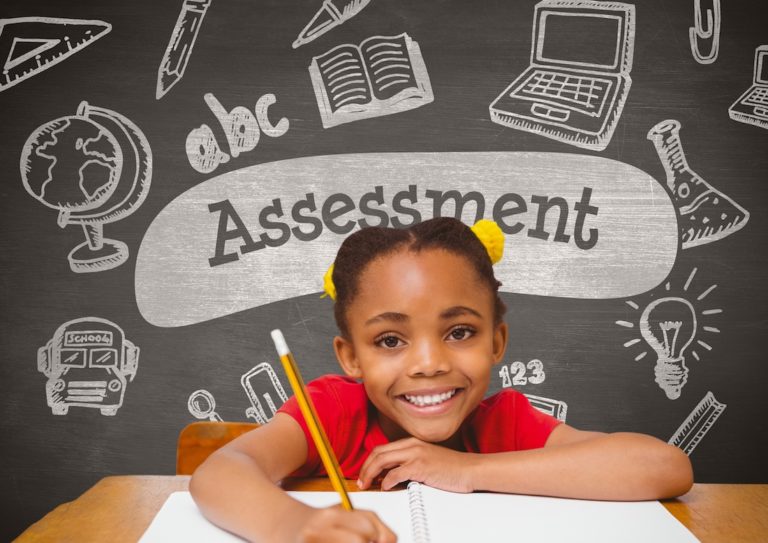In a day and age where high-stakes testing often deprives the classroom of true autonomy and engagement, the word assessment can carry a negative connotation. The word assessment often invokes visions of students in silent rows shuffling through a packet of papers and deciphering a passel of questions. The truth is that assessment in education is both necessary and useful for student success.
When applied properly, student assessment serves as one of the most powerful tools at a teacher’s disposal. The first step to effective assessment is knowing the different types of assessments, and when each assessment is the optimal choice.
Different Types of Assessments
When categorizing assessments, you may naturally think of words like “test,” “essay,” or “oral presentation.” While these are effective assessment tools, in order to classify assessment types we must determine the purpose of an assessment. Upon knowing the purpose and intended use of an assessment, it will be easier to choose from the types of assessment below.
Diagnostic Assessments
These assessments are administered at the beginning of a term or unit in order to establish a baseline for a student’s ability. Also known as pretests, diagnostic assessments give the teacher a picture of the students’ prior knowledge, thus providing a foundation for instructional planning. Due to the nature of these assessments, they should not negatively impact a student’s grade. It’s no secret that students often neglect to take assessments that don’t impact their grade seriously, thus offering other performance or growth incentives can help yield more reliable data.
Formative Assessments
Formative assessments provide information about students’ progress toward mastery throughout instruction. Formative assessments are typically quick and can be administered in conjunction with a range of concepts. Think-pair-share, exit tickets, and class-wide polls are examples of formative assessments that are flexible, quick, and informative. The purpose of formative assessments is to gather student performance data that can be useful as you advance toward a summative assessment.
Summative Assessments
The opposite of their formative counterparts, summative assessments are typically administered when students have had the time and support needed to achieve mastery. Summative assessments often occur at the end of a unit or term, and typically carry significant weight grade-wise. During a summative assessment, students are expected to independently apply the concepts learned during instruction.
Ipsative Assessments
Ipsative assessments track student growth. The purpose of this type of assessment is to compare a student’s performance to his/her past performance. The goal is for the student to improve as opposed to pursuing a certain grade or comparing students to one another.
Norm-Referenced Assessments
Unlike ipsative assessments, norm-referenced assessments compare student performance. In order to administer this type of assessment, you must first establish an average norm. This norm could be the average of past student performance on the assessment. When administering a norm-referenced assessment, the teacher can see how a student performs in relation to other students.
Criterion-Referenced Assessments
Criterion-referenced assessments measure student performance according to a set standard. Mastery is determined based upon whether students meet the standard. Curriculum should be aligned to the criterion-referenced assessment in order to yield positive results. These assessments are typically summative and include a plethora of concepts.
Alternative Assessments
Alternative assessments seek to evaluate students’ performance ability as opposed to knowledge. These assessments often call for students to perform certain tasks that do not include traditional tests. Examples are oral presentations or portfolios. Alternative assessments provide an opportunity for students to apply learned concepts, and when used correctly can enhance career readiness.
How to Use Assessments in Your Classroom
Administering assessments in the classroom is necessary, but the use of assessments does not end there. For assessments to be useful, one must also understand how to use the resulting data and what steps to take based upon assessment results. Below are some tips that will help you get the most out of your classroom assessments.
Don’t Over-Assess Your Students
Most teachers indubitably agree that too much assessment does not foster a healthy classroom environment. When assessments are overused, they lose their potency and become a nuisance to students. In order to ensure that you are only assessing students as much as necessary, take time to evaluate what your ultimate learning goals are. Plan assessments that build up to those goals consistently, not frequently.
Provide Timely and Actionable Feedback
For assessments to be useful, students must understand their performance. Too often, students take assessments and see a resulting numerical value that doesn’t explain their performance. You should provide feedback to your students following assessments that is both actionable and timely. Timely feedback is given when the feedback is still applicable. Actionable feedback gives students tools to improve on areas of weakness.
Use Assessment Data to Drive Instruction
Your assessment data should always drive your instruction. Once you know how your students have mastered a concept, this should influence your instruction going forward. This requires flexibility and causes your instruction to meet the specific needs of your students.
Remediate and Reassess
When assessment data highlights deficits, take action to remedy those deficits. Also, an assessment does not have to be the end all and be all. After remediation, you should make plans to reassess deficits as time permits.
The Benefits of Assessment
When assessments are varied and selected intentionally, they serve an important purpose in the classroom. Through the use of these classroom assessment techniques, teachers can gain insight into their students’ abilities and challenges. The data that effective assessments provide serves as a roadmap for instructional planning and helps teachers to tailor their lessons to the diverse needs of their students. Although the prevalence of standardized testing can make assessment seem like an undue burden, teachers can reclaim the true power of assessment through knowledge and proper planning.




